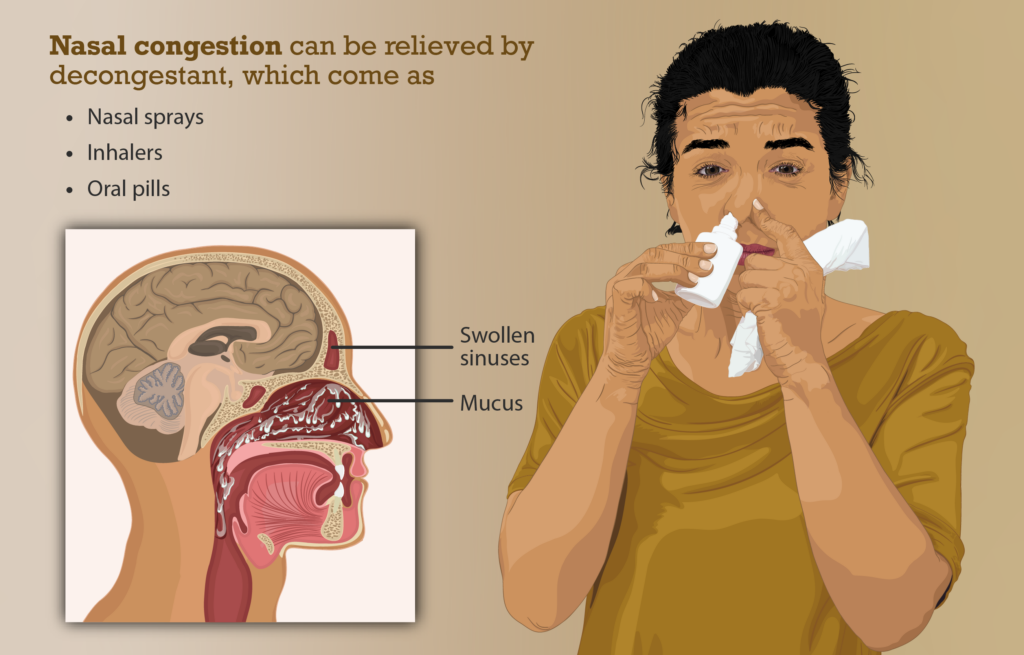WHAT DOES NASAL CONGESTION MEAN?
Nasal congestion, also called stuffy nose, is a feeling of fullness in the nose or face. There also might be fluid running or dripping out of the nose or down the back of the throat. Nasal congestion is often called rhinorrhea or rhinitis. But the terms are different.
HOW DO I CLEAR MY NASAL CONGESTION
- Drink lots of water and clear fluids.
- Use a saline nasal spray or wash to flush out mucus.
- Apply adhesive strips to your nose to open nasal passages.
- Use humidifiers to moisten the air at your home and/or workplace.

What are the signs and symptoms of nasal congestion?
Nasal congestion in adults
- Bad breath.
- Cough.
- Ear pain.
- Fatigue.
- Fever.
- Headache or facial pain.
- Itchy eyes, nose, mouth or throat.
- Mild body aches.

What are the causes?
Many people think that their nose gets congested from too much thick mucus. But, usually, your nose gets stuffy When the tissues lining it become swollen The swelling is from inflamed blood vessels. Your nose can become stuffy because of a cold, the flu, and allergies.

How to Unblock a Nose
- Steam Inhalation. Fill a bowl with hot, steaming water and place it on a sturdy table.
- Use a Humidifier. A humidifier converts water to moisture, gradually increasing the humidity in a room.
- Take a Hot Shower.
- Stay Hydrated.
- Nasal Sprays. .
- Decongestant Tablets. .
- Decongestant Liquids. .
- A warm Compress.
Anything that irritates inside of the nose can cause a stuffy nose. Infections — such as colds, flu or sinusitis — and allergies often cause stuffy and runny noses. Irritants in the air, such as tobacco smoke, perfume, dust and car exhaust, also can cause these symptoms.

What is the best medicine for congestion?
Clear congestion: The best medicines for a stuffy nose are decongestants. They help open nasal passageways by reducing swelling.
If you want to know more about the causes of Nasal congestion, visit our blog on Sinusitis
